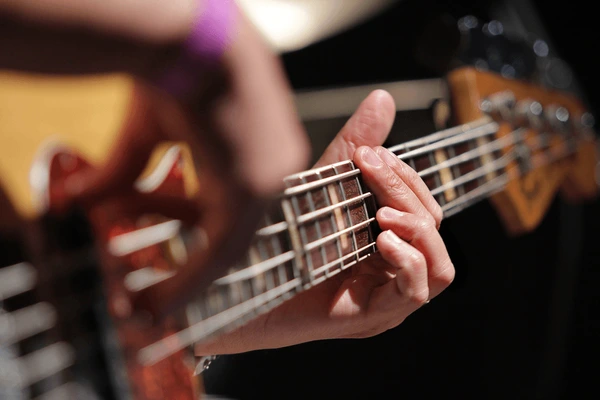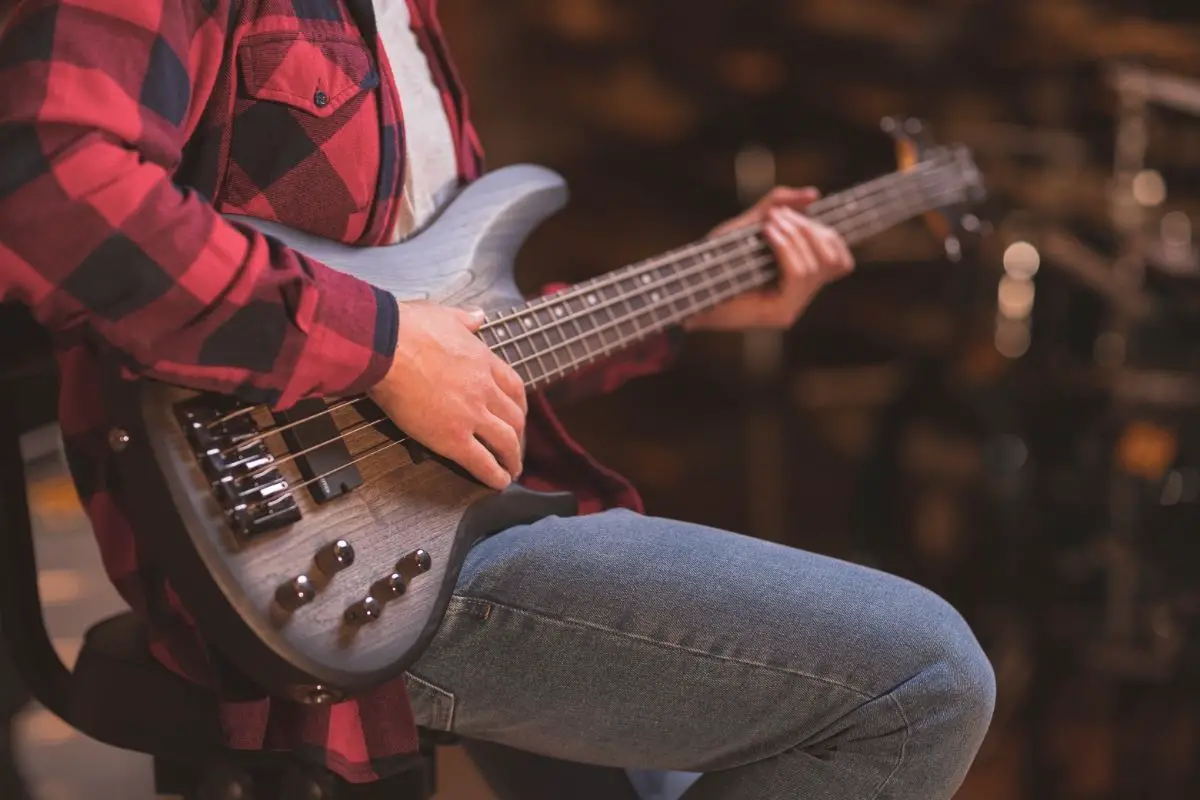Are you considering picking up the bass guitar as your next musical instrument? You may be wondering, “how hard is it to learn bass guitar?” As someone with experience in learning and playing this versatile instrument, I can assure you that it’s not as challenging as some people make it out to be.
In this article, I will share my personal insights and tips on how to successfully learn bass guitar. We’ll discuss the basics of playing bass, common challenges beginners face, and effective strategies for overcoming them. By the end of this article, you will have a better understanding of what it takes to become a skilled bass guitarist and feel confident in starting your musical journey. So let’s start jamming!
So, how hard is it to learn bass guitar?
Learning any instrument takes time, dedication, and practice. The difficulty level of learning bass guitar will vary from person to person depending on their natural abilities and prior musical experience. However, with the right mindset and approach, it is definitely achievable for beginners.
The first step in learning bass guitar is to familiarize yourself with the instrument itself. Get comfortable holding it, learn how to properly tune it, and understand the different parts of the bass such as frets, strings, and knobs.
Next comes learning basic techniques like plucking or picking strings and understanding rhythm. It’s important to start slow and focus on accuracy rather than speed at first. As you build muscle memory and develop your skills over time, you can gradually increase your speed.
One helpful tip for beginners is to learn songs that you enjoy listening to. This will keep you motivated and make practicing more enjoyable. You can find tutorials online or even take lessons from a professional instructor who can provide personalized guidance.
Another important aspect of learning any instrument is consistency. Set aside dedicated practice time each day or week so that you can continue building upon what you have learned previously.
Lastly, don’t be afraid to make mistakes! Learning an instrument takes patience and perseverance. Embrace your mistakes as opportunities for growth and improvement rather than getting discouraged by them.
In summary, while learning bass guitar may have its challenges (like any new skill), with determination and proper guidance anyone can become proficient in playing this versatile instrument.
Understanding the Basics of Bass Guitar: Tuning, Fretting and Plucking
When it comes to getting started with the bass guitar, there are a few key aspects you’ll want to get comfortable with. First off is tuning. Tuning your bass correctly is crucial because even if you’re hitting all the right notes, they won’t sound pleasant if your strings aren’t in harmony. Standard tuning for a four-string bass is E-A-D-G, from the lowest-pitched string to the highest. Use an electronic tuner or a tuning app on your phone; these tools make it super easy and accurate.
Moving on to fretting – this part can really impact how cleanly you play each note. When you press down on a string between two metal bars (frets) along the neck of your bass, you’re essentially shortening the vibrating length of that string to produce different pitches. It’s important not just where but also how you fret—pressing too lightly results in buzzing while pressing too hard might strain your fingers unnecessarily.
Finally, let’s talk about plucking. This involves using either a pick or your fingers to strike the strings and bring out those deep tones we all love about bass guitars. Fingerstyle plucking offers warmth and fluidity whereas using a pick provides clarity and attack—both techniques are valuable depending on what style of music you’re playing.
- Start slow: aiming for precision over speed
- Watch instructional videos
- Practice consistently
With time and practice focusing on these fundamentals together will help create that solid foundation every great bassist needs!
Exploring Common Challenges in Learning Bass Guitar: Finger Strength, Timing and Coordination
Learning to play the bass guitar is an exciting journey, but it does come with its own set of challenges. One of the first hurdles you’ll face is building *finger strength*. Bass strings are thick and require more pressure compared to a regular guitar. For beginners, pushing down on those hefty strings can be quite tough initially. Over time, your fingers will adapt, becoming stronger and more agile. It’s like giving your fingers a workout each practice session! Small exercises like simple scales or even just holding down notes for longer durations help in not only strengthening the fingers but also forming calluses that make playing less painful.
Another key aspect involves mastering timing and coordination. The bass plays a vital role in keeping rhythm within any band setting; hence impeccable timing is crucial. It’s not uncommon for new players to struggle aligning their plucks with beats—all while maintaining consistent tempo throughout a song. Metronomes become your best friend here, allowing you to gradually build up from slower tempos before tackling faster ones confidently.
Coordination between both hands presents another layer of complexity because they need seamless synchrony: one hand managing fretboard positions while plucking accurately with precision using other ones becomes paramount skill developed over persistent practice sessions.
Persistence pays off immensely though—it’s all about practice making perfect eventually!
Read also: how to record electric guitar

Practicing Techniques to Overcome Beginner’s Difficulties in Learning Bass Guitar: Building Endurance, Improving Speed and Developing Precision
Learning to play the bass guitar can be a thrilling journey, yet it often comes with its own set of hurdles. One major challenge for beginners is building endurance. Playing for extended periods can strain your fingers and wrists, making it essential to develop the necessary stamina. Simple exercises like playing scales or practicing repetitive patterns on open strings can go a long way. Gradually, you’ll notice your hands getting stronger and more resilient. Remember to take breaks and stretch your fingers; this not only prevents injury but also helps in maintaining flexibility.
Improving speed and developing precision are crucial steps that follow once you’ve built up some basic endurance. Speed doesn’t come overnight—it requires consistent practice with a metronome. Start slow to ensure each note is clear before gradually increasing the tempo. Precision comes from focused practice on technique; make sure every finger placement is accurate by breaking down complex lines into manageable chunks.
- Tapping exercises: Use these to enhance finger independence.
- Palm muting: This technique adds clarity by reducing unwanted string noise.
- Simplified songs: Practicing easier pieces boosts confidence while honing skills.
Stay patient—every little improvement counts! Overcoming these beginner’s difficulties will transform challenges into accomplishments, setting you well on your way toward mastering the bass guitar.
Harnessing the Power of Patience and Consistency in Mastering the Bass Guitar
Learning to play the bass guitar is more than just hitting the right notes; it’s about embracing patience and consistency. When you first pick up that heavy, four-stringed instrument, it might feel overwhelming. Your fingers might stumble, and your timing could be off. But don’t let that discourage you! Every great bassist has been in your shoes at some point. Developing a new skill takes time, so give yourself grace and room to grow.
The real magic happens when you commit to regular practice sessions. Consistency is key here. It’s like planting a garden; each day of practice is akin to watering your plants little by little until they bloom into something beautiful.
Make sure you:
- Set achievable goals
- Track your progress
- Tackle one technique at a time
Let’s say you’re struggling with finger placement—breaking it down into smaller steps can make all the difference. Focus on perfecting one scale before moving on to another.
Remember, mistakes are part of the journey—each misstep brings you closer to mastering those grooves and rhythms that made you fall in love with the bass in the first place.
Patience combined with consistent effort transforms challenges into accomplishments over time. The joy of playing well doesn’t come overnight but emerges from continual dedication. So keep plucking those strings—you’re creating music as unique as your journey itself!
You may also like: kimball piano upright
Conclusion: Making your Mark as a Skilled Bass Guitarist – It’s Easier than you Think!
Imagine the power of low-end rhythms that move people and fill a room with energy. That’s the magic of playing bass guitar. To start, embrace the basics. Learn how to hold your instrument correctly, understand finger placement on frets, and get comfortable plucking those thick strings. Using simple exercises can work wonders for developing muscle memory. Before you know it, you’ll be surprised at how natural it feels under your fingers.
Click here to learn more about Bass Guitars!
Progressing further as a bassist means diving into various genres and techniques. For instance:
- Experiment with slap bass—that funky percussive pop.
- The walking bass line is foundational in jazz.
- Try out different tunings for unique sounds.
Don’t forget the art of listening! Pay close attention to drummers; they’re often your rhythm partners. Absorb influences from legendary players like Jaco Pastorius or Victor Wooten but also find your own groove.
In conclusion: Making your mark as a skilled bassist isn’t merely within reach—it’s easier than you think! With dedication, practice, and passion for those deep grooves, you’ll soon become an essential part of any band’s backbone.

